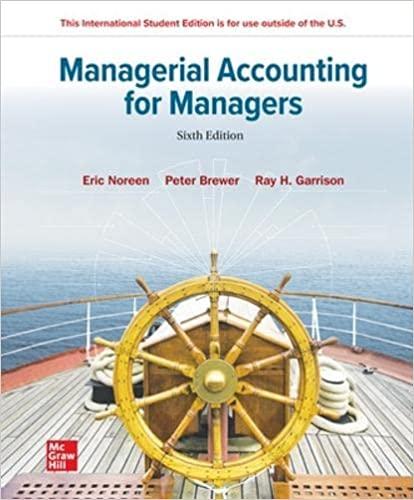Question
1. Evidence includes: a. Physical objects b. Documents c. Observations D. All of the above Easy 2. If evidence is tangible, it is said to
1. Evidence includes:
a. Physical objects b. Documents c. Observations D. All of the above
Easy 2. If evidence is tangible, it is said to be _______ evidence.
a. Documented b. Heresy C. Physical d. Forged
Moderate 3. Which of the following would be a violation of the chain of custody?
a. Locking documents in a safe that only the investigator has the combination to. B. Mailing original documents to another party without proof of receipt. c. Signing over original documents to legal counsel. d. Documenting the placing of items in a case file for storage.
Moderate 10. When businesses or persons obtain mortgages for things other than real estate, these are called:
a. Leins B. Chattel Mortgages c. Collateral Loans d. Uncollateralized Loans
Easy 11. Which of the following type of records can typically only be access by law enforcement?
a. Commercial Databases b. Motor Vehicle Identification Number C. Dealership vehicle records d. UCC Filings
Moderate 12. If the fraud investigator is not an employee of the IRS, or a member of a federal agency that can obtain tax records via subpoena, how much he obtain the information?
a. Through a bench warrant. B. Through discovery or voluntary consent of the tax payer. c. Through a subpoena issued by a Grand Jury. d. All of the above
Moderate 13. When did the Social Security Administration begin tracking the SSDI?
a. 1984 B. 1962 c. 1944 d. 1876
Easy 22. Besides a judge, what other person may issue a search warrant in certain jurisdictions?
a. District Attorney b. Elected Sheriff C. Magistrate d. Grand Jury Foreman/woman
Moderate 23. A process that allows information in various databases and files to be evaluated and integrated in such a way that associations become apparent is called a(n):
a. Boon-lean search b. Query C. Link Analysis d. Financial Records Search Warrant
Easy 24. Through Net Worth Analysis, you are attempting to determine:
a. Total earnings for a period of years. B.The change in net worth for the year. c. The amount of debt financing. d. None of the above
Moderate 25. __________ are used when third parties (persons other than the client) have knowledge of some aspect of a financial or non-financial matter and can be asked to provide this information.
A.Confirmations b. Engagement Letters c. Subpoenas d. Grand Juries
Moderate 29. The basis for net worth calculations is:
a. Net Worth= Gross Pay - Tax Liabilities b. Current Debt - Cash on hand c. Assets= Liabilities - Owner's Equity D. Assets = Liabilities + Owner's Equity
Easy 30. Which of the following will NOT explain a change in net worth?
A.Inflation b. Income c. Liabilities d. Inheritances
Step by Step Solution
There are 3 Steps involved in it
Step: 1

Get Instant Access to Expert-Tailored Solutions
See step-by-step solutions with expert insights and AI powered tools for academic success
Step: 2

Step: 3

Ace Your Homework with AI
Get the answers you need in no time with our AI-driven, step-by-step assistance
Get Started


